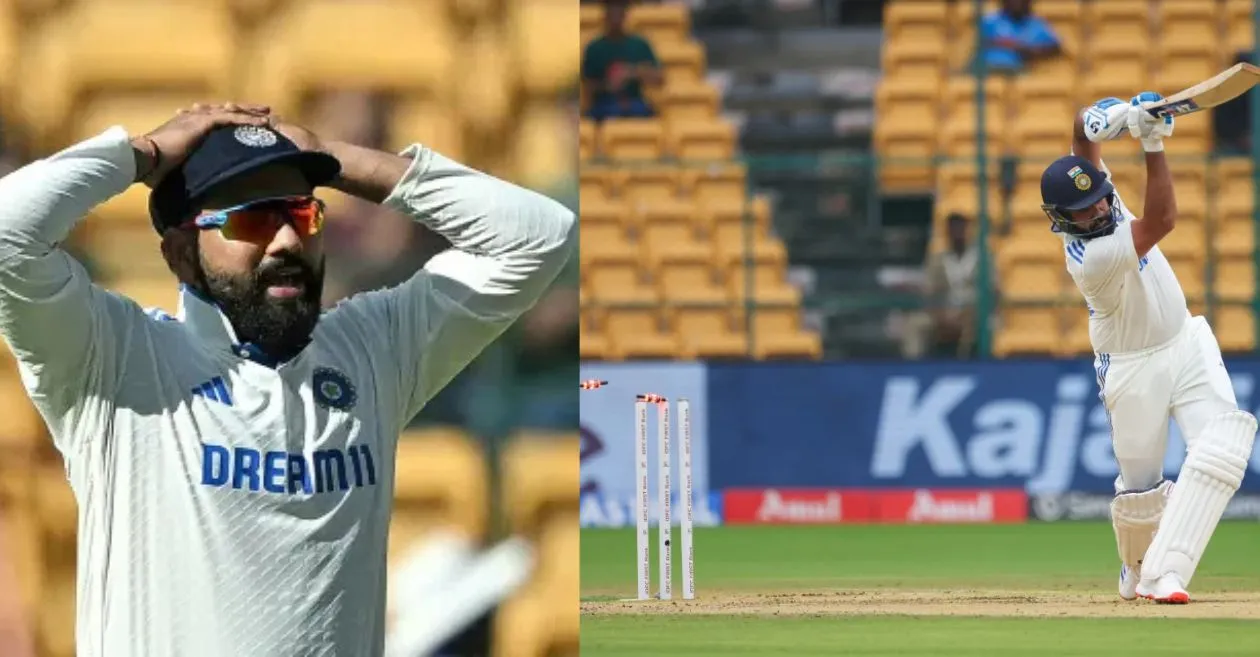The first Test between India and New Zealand at the M. Chinnaswamy Stadium in Bengaluru turned into a nightmare for the home team, who were bowled out for a mere 46 runs. This dismal performance marked India’s lowest total on home soil and raised eyebrows among cricket enthusiasts.
Three critical reasons that contributed to India’s batting failure
Misjudging the pitch conditions
India’s decision to bat first after winning the toss is a common strategy, particularly on home turf where pitches are expected to deteriorate over time. However, the team overlooked the fact that the pitch had been under covers due to rain, creating seam-friendly conditions ideal for fast bowlers. The cloudy skies and damp surface proved to be a gamble that backfired spectacularly, as India quickly found themselves in dire straits at 34 for 6 by lunchtime on Day 2. This miscalculation set the tone for a disastrous end of the innings for 46 runs.
Also READ: 5 lowest totals for India in Tests on home soil
Underestimating New Zealand’s bowling attack
While India may have been familiar with challenging batting conditions from their recent series against Bangladesh, they severely underestimated New Zealand’s formidable pace attack. Led by Tim Southee and supported by Matt Henry and William O’Rourke, New Zealand’s bowlers exploited the conditions ruthlessly. Their ability to generate movement off the pitch caught Indian batters off guard, leading to five ducks in the innings, including notable players like Virat Kohli and KL Rahul. The Indian batters’ lack of preparation for this level of pace bowling was evident and ultimately cost them dearly.
Tactical errors in batting order
Another significant factor contributing to India’s collapse was their unusual batting order. With Shubman Gill sidelined due to injury, it was perplexing to see less experienced players like Sarfaraz Khan and Rishabh Pant promoted ahead of seasoned batter KL Rahul, who is adept at handling moving balls. Furthermore, Kohli’s placement at No. 3 seemed counterintuitive given his struggles against seam bowling in tough conditions. This unconventional strategy disrupted the team’s balance and left them vulnerable as key players fell cheaply.
India’s batting collapse against New Zealand can be attributed to a combination of poor decision-making regarding pitch conditions, underestimating their opponents’ bowling capabilities, and tactical blunders in their batting lineup.

